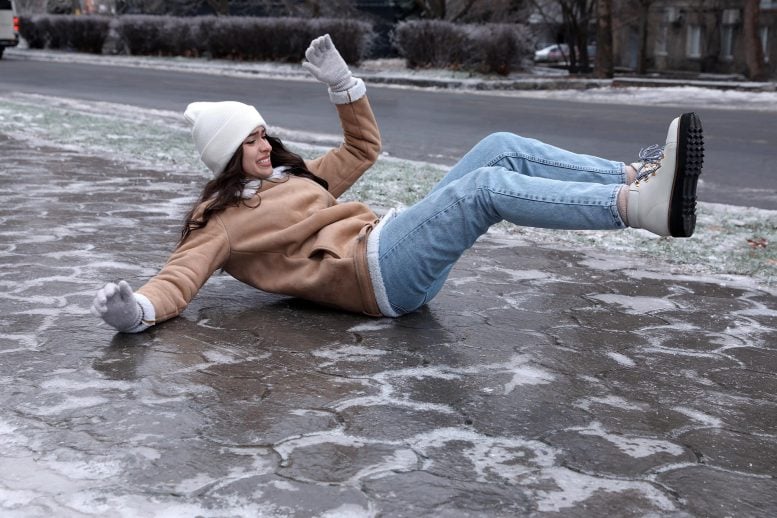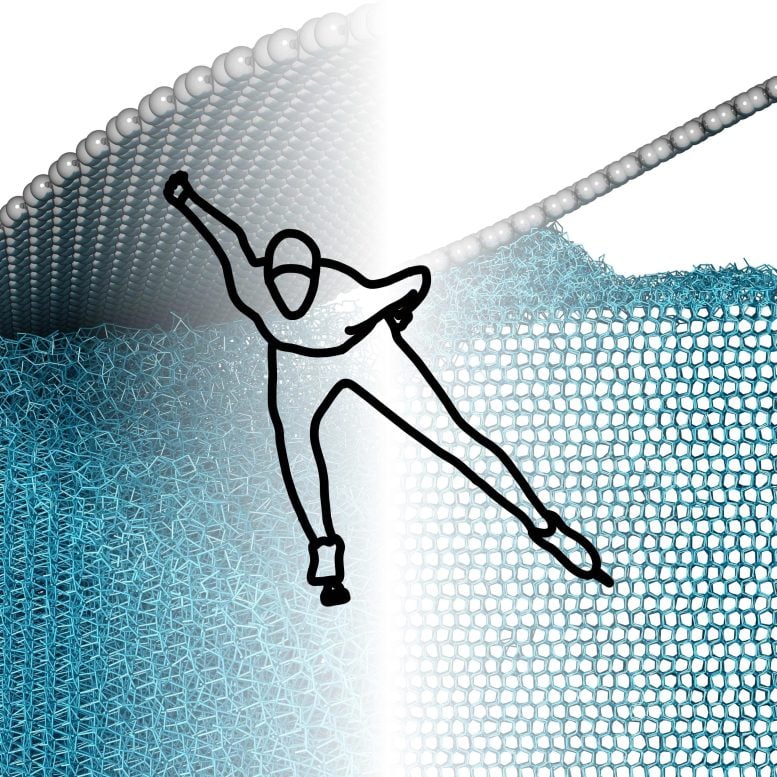
For nearly two centuries, scientists believed that ice becomes slippery because pressure or friction melts its surface. New research from Saarland University overturns this idea.
For more than a century, students around the world have been told that pressure and friction make ice melt. The familiar winter slip on a frozen sidewalk is often blamed on body weight pressing through the sole of your (still warm) shoe. New research from Saarland University indicates this view is incomplete, finding that slipperiness stems from interactions between molecular dipoles in the ice and those in the contacting surface, such as a shoe sole, rather than from pressure or friction.
The study by Professor Müser and colleagues Achraf Atila and Sergey Sukhomlinov challenges a model put forward nearly two hundred years ago by the brother of Lord Kelvin, James Thompson, who suggested that pressure and friction, along with temperature, cause ice to melt.
“It turns out that neither pressure nor friction plays a particularly significant part in forming the thin liquid layer on ice,” explains Martin Müser. Instead, computer simulations by the team reveal that molecular dipoles are the key drivers behind the formation of this slippery layer, which so often causes us to lose our footing in winter.
The Physics of Dipoles
But what exactly is a dipole? A molecular dipole arises when a molecule has regions of partial positive and partial negative charge, giving the molecule an overall polarity that points in a specific direction.
To get a better understanding of what is going on, it helps to know how ice is structured. Below zero degrees Celsius, water molecules (H₂O) arrange themselves into a highly ordered crystal lattice in which the molecules are all aligned neatly with one another creating a solid, crystalline structure.

When someone steps onto this orderly structure, it’s not the resulting pressure or friction of the shoe that disrupts the top layer of molecules, but the orientation of the dipoles in the shoe sole interacting with those in the ice. The previously well-ordered structure suddenly becomes disordered.
“In three dimensions, these dipole-dipole interactions become ‘frustrated,’” says Müser, referring to a concept in physics where competing forces prevent a system from achieving a fully ordered stable configuration.
At the microscopic level, the forces between the dipoles in the ice and those in the shoe sole material disrupt the orderly crystalline structure at the interface between ice and shoe, causing the ice to become disordered, amorphous, and ultimately liquid.
Rethinking Cold-Weather Physics
In addition to overturning nearly 200 years of accepted knowledge, the team‘s research also debunks another misconception. “Until now, it was assumed that skiing below –40°C is impossible because it’s simply too cold for a thin lubricating liquid film to form beneath the skis. That too, it turns out, is incorrect,” explains Professor Müser.
“Dipole interactions persist at extremely low temperatures. Remarkably, a liquid film still forms at the interface between ice and ski—even near absolute zero,” says Müser. However, at such low temperatures, the film is more viscous than honey. We’d hardly recognize it as water, and skiing on it would be practically impossible—but the film nevertheless exists.
For someone who is nursing an injury because they slipped and fell in winter, it hardly matters whether pressure, frictio,n or dipoles were to blame. But for physics, the distinction is crucial. The implications of this discovery by the Saarland research team are still unfolding, and the scientific community is taking notice.
Reference: “Cold Self-Lubrication of Sliding Ice” by Achraf Atila, Sergey V. Sukhomlinov and Martin H. Müser, 7 August 2025, Physical Review Letters.
DOI: 10.1103/1plj-7p4z
Never miss a breakthrough: Join the SciTechDaily newsletter.
Source link

:max_bytes(150000):strip_icc()/Alzheimers-Microplastics-Could-Be-Making-It-Worse-FT-BLOG0925-f8e4346e7a0a4f67a846349356b52335.jpg)